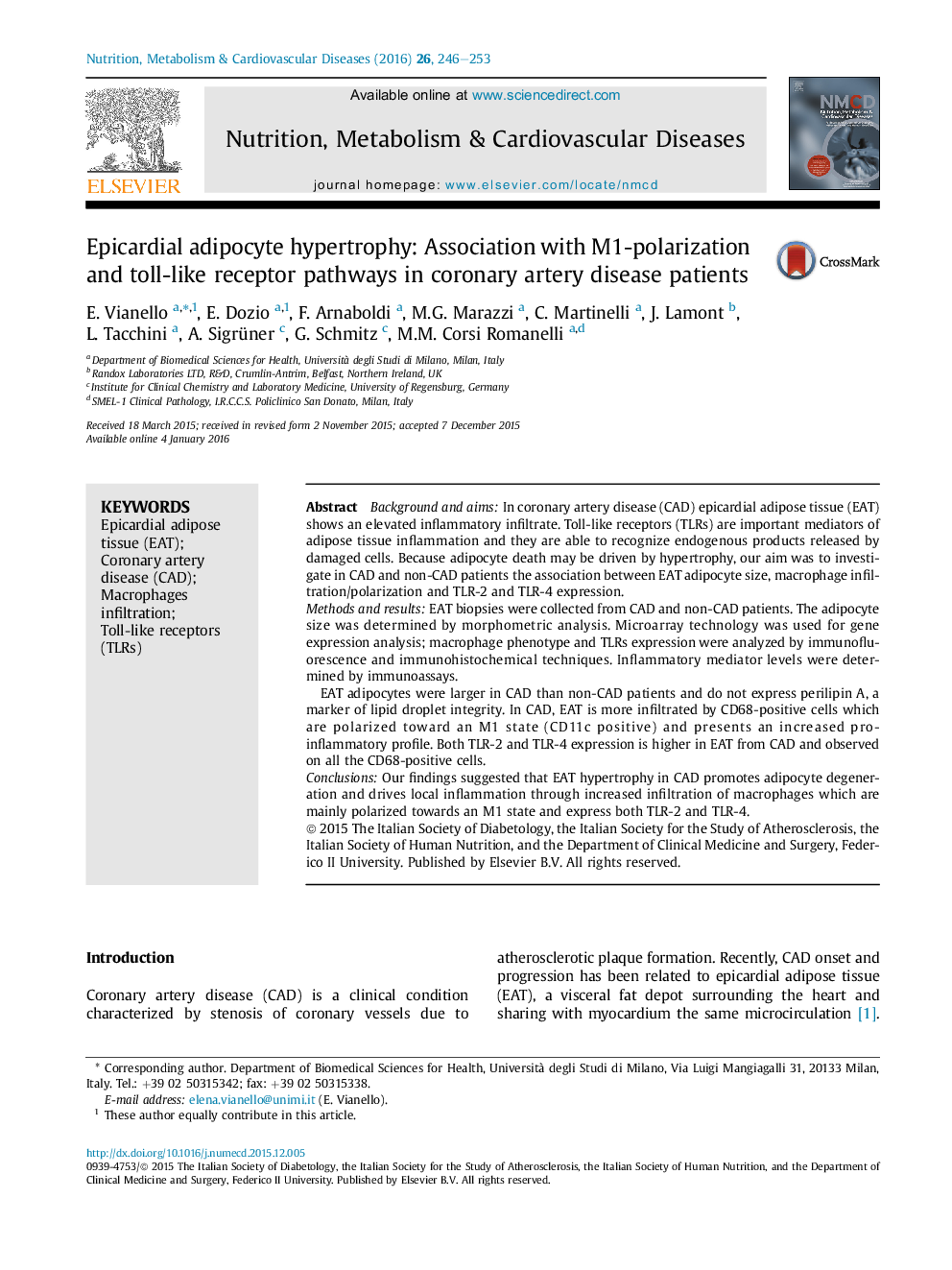| Article ID | Journal | Published Year | Pages | File Type |
|---|---|---|---|---|
| 3001779 | Nutrition, Metabolism and Cardiovascular Diseases | 2016 | 8 Pages |
•CAD patients present more infiltrated macrophages at EAT level than non-CAD patients.•M1-macrophage infiltration is most associated to adipocytes size.•Macrophages as CD68 positive cells express TLR-2 and TLR-4 in EAT of CAD patients.
Background and aimsIn coronary artery disease (CAD) epicardial adipose tissue (EAT) shows an elevated inflammatory infiltrate. Toll-like receptors (TLRs) are important mediators of adipose tissue inflammation and they are able to recognize endogenous products released by damaged cells. Because adipocyte death may be driven by hypertrophy, our aim was to investigate in CAD and non-CAD patients the association between EAT adipocyte size, macrophage infiltration/polarization and TLR-2 and TLR-4 expression.Methods and resultsEAT biopsies were collected from CAD and non-CAD patients. The adipocyte size was determined by morphometric analysis. Microarray technology was used for gene expression analysis; macrophage phenotype and TLRs expression were analyzed by immunofluorescence and immunohistochemical techniques. Inflammatory mediator levels were determined by immunoassays.EAT adipocytes were larger in CAD than non-CAD patients and do not express perilipin A, a marker of lipid droplet integrity. In CAD, EAT is more infiltrated by CD68-positive cells which are polarized toward an M1 state (CD11c positive) and presents an increased pro-inflammatory profile. Both TLR-2 and TLR-4 expression is higher in EAT from CAD and observed on all the CD68-positive cells.ConclusionsOur findings suggested that EAT hypertrophy in CAD promotes adipocyte degeneration and drives local inflammation through increased infiltration of macrophages which are mainly polarized towards an M1 state and express both TLR-2 and TLR-4.
